Cemeteries are often imagined as frightening places, but in truth, they have long been designed as gardens of reflection. Far from being morbid, they are among the most beautiful and contemplative spaces of the Gothic imagination: quiet landscapes where architecture, nature, and memory meet. When we think of gothic aesthetics today—the ornate gates, ivy-clad mausoleums, candlelit vigils—it is the imagery of cemeteries that often lingers. And yet, their mood is less about fear than about serenity.
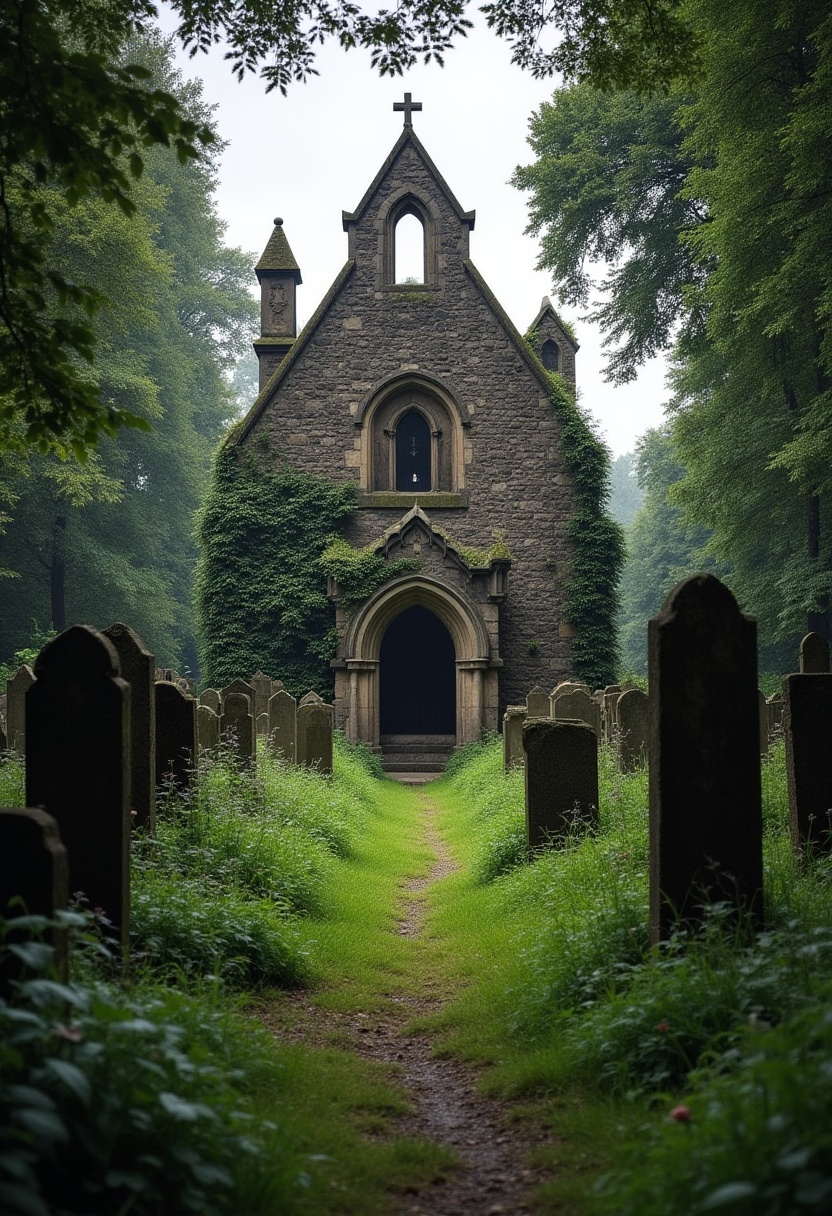
The Cemetery as Landscape
In the 19th century, cemeteries were often laid out as parks. The famous Père Lachaise in Paris, Highgate Cemetery in London, and Mount Auburn in Massachusetts were designed not only as burial grounds but as places for walking, sitting, and reflecting. Winding paths, sculpted trees, and flowering plants framed graves and monuments. They were as much botanical gardens as they were places of rest.
Victorians strolled through cemeteries much as we walk through gardens today. Families visited not just to mourn but to enjoy the quiet beauty of the grounds. The gothic mood of these cemeteries arose not from terror, but from the way they combined solemnity with artistry. A carved angel, a draped urn, a moss-covered cross—each detail contributed to an aesthetic both peaceful and profound.
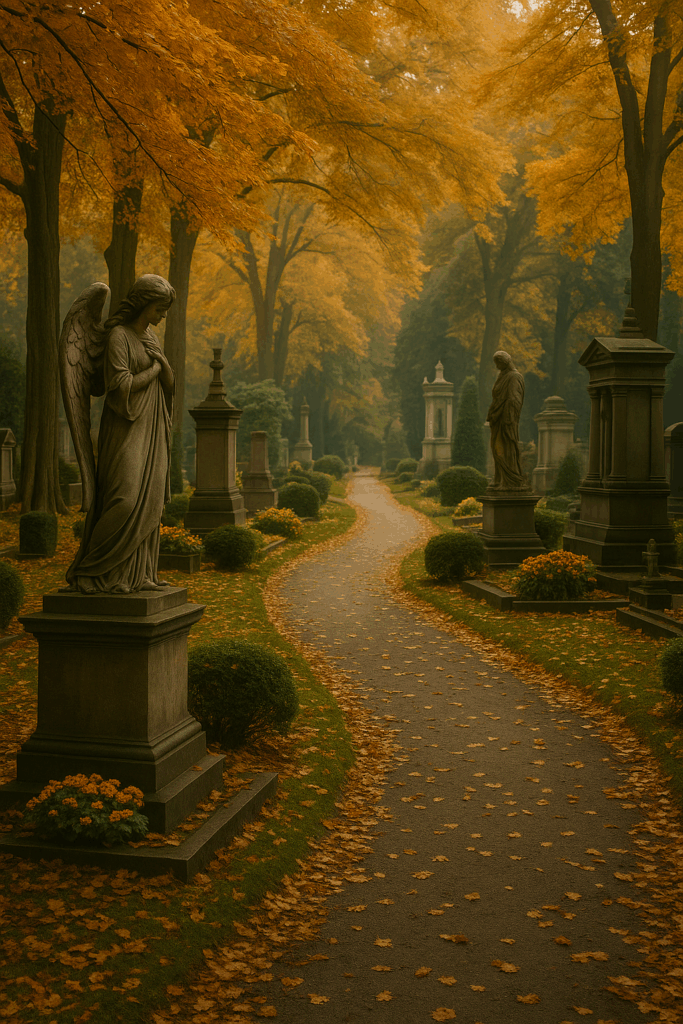
Stone as Memory
The monuments themselves were works of art. Gravestones were carved with delicate symbols: clasped hands, weeping willows, stars, roses, and urns draped with cloth. These designs were not chosen at random; each carried meaning. The willow represented mourning, the rose love, and the draped urn the passage from life to eternity.
These symbols gave cemeteries a language. They turned stone into poetry, transforming loss into a work of art. Even today, when we walk through an old cemetery, it is these details that capture our attention. We are moved not only by the lives remembered but by the beauty of how they were remembered.
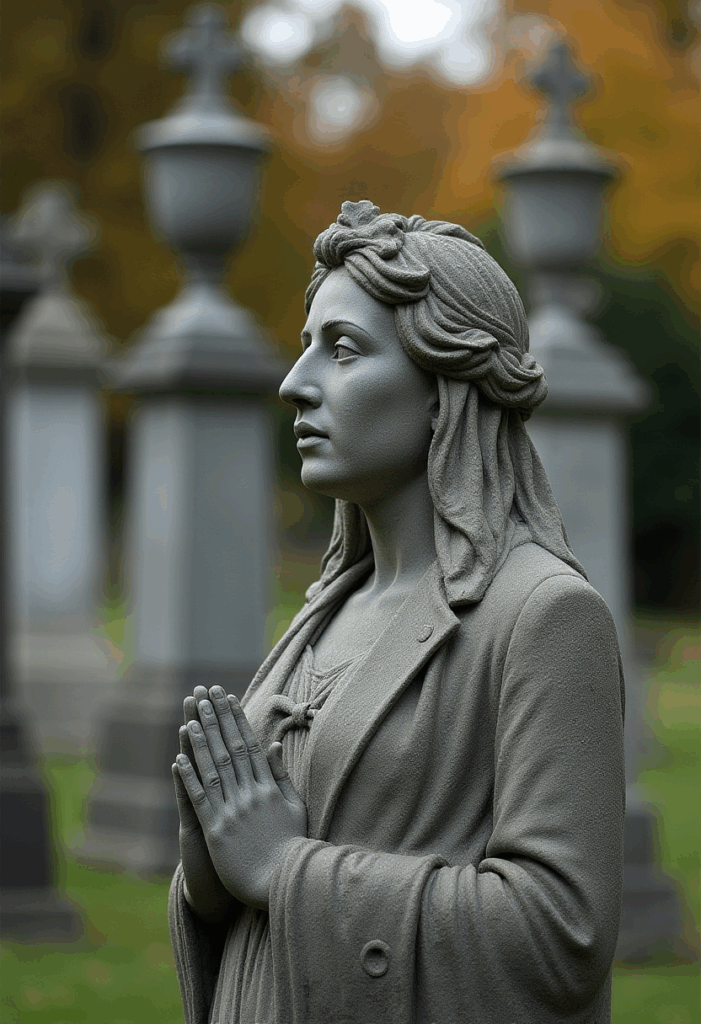
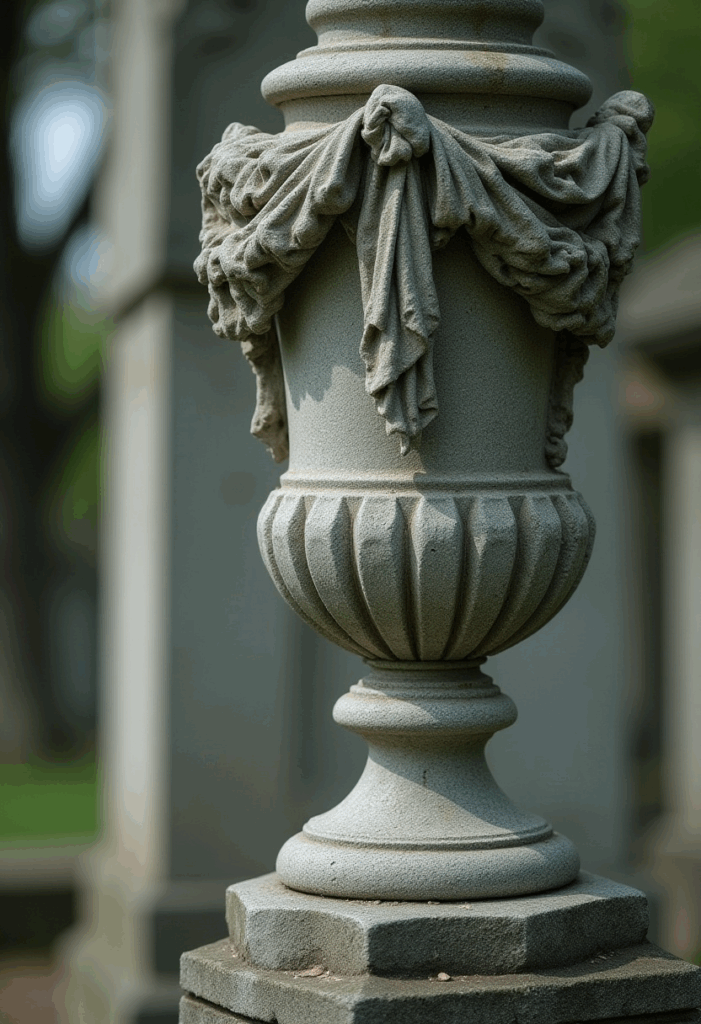
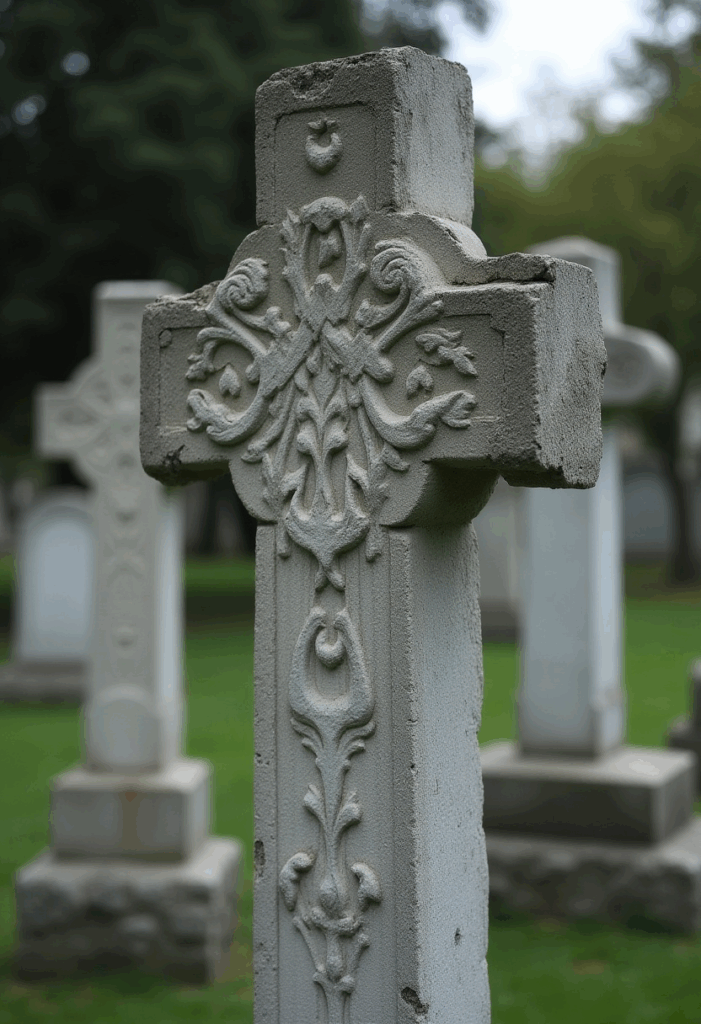
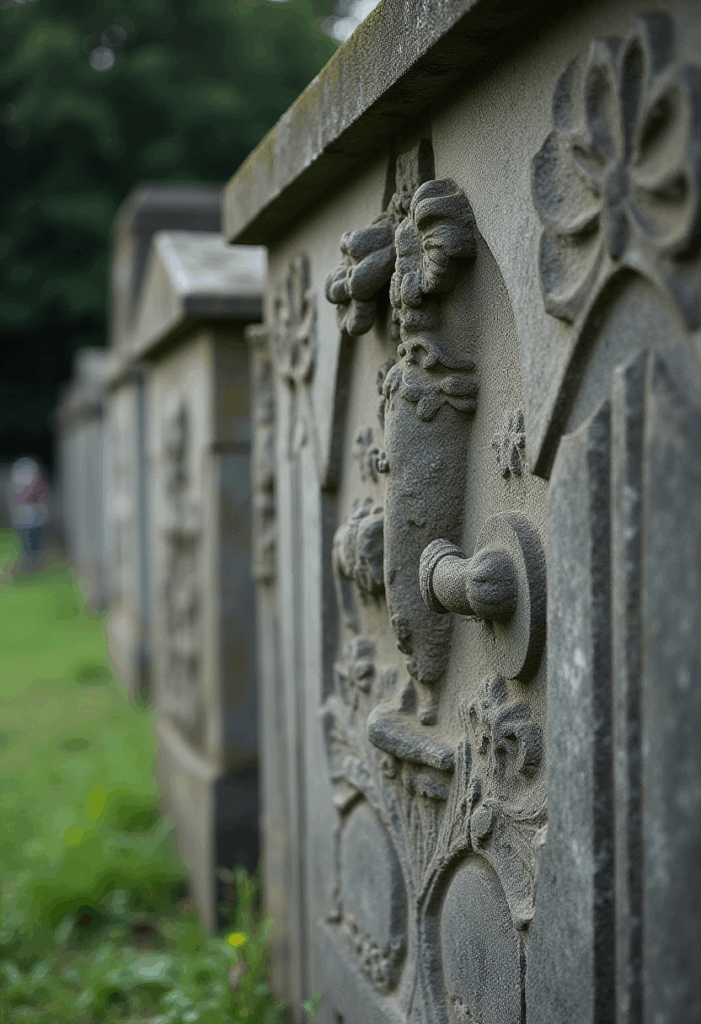
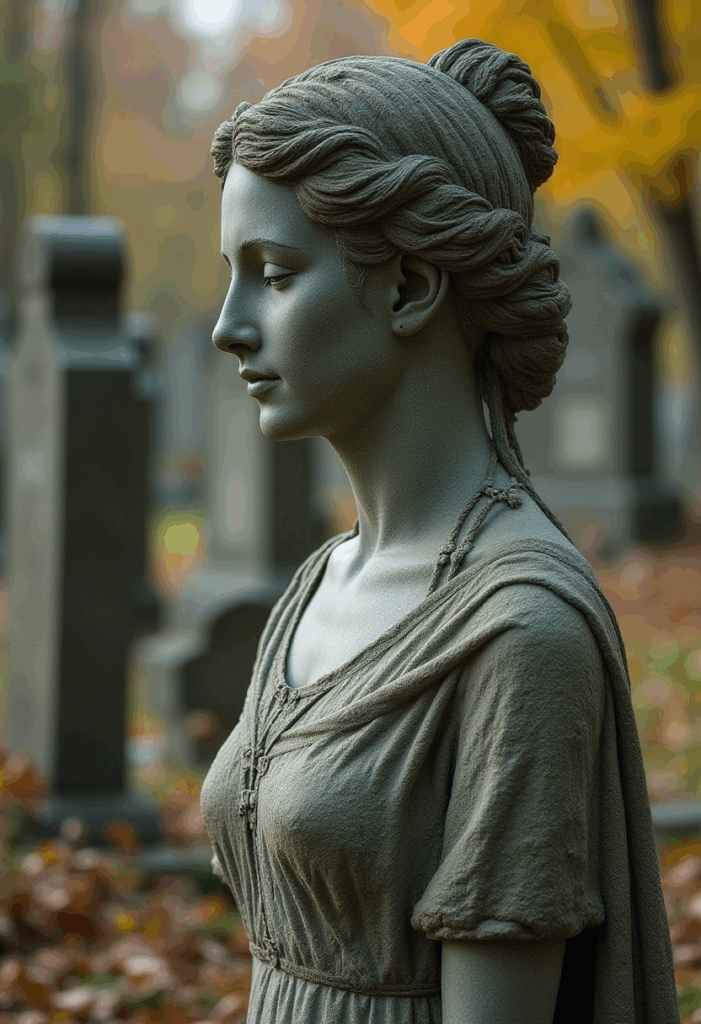
Aesthetics of Reflection
What makes cemeteries so naturally gothic is their aesthetic. They are quiet, hushed, filled with shadows and dappled light. Trees frame the sky. Birds circle overhead. Stone and nature meet in harmony. It is this blend—solemnity softened by natural beauty—that creates a mood of reflection.
To wander in a cemetery is to feel time differently. You notice the age of stone, the slow growth of ivy, the way names and dates fade but shapes endure. It is not frightening, but grounding —a reminder that life and memory are inextricably intertwined.
This is why cemeteries appear so often in gothic-inspired imagery online. A wrought-iron gate at sunset, a row of mossy gravestones, an angel half-covered by leaves—these images are not about horror. They are about aesthetics, quiet, and respect. They remind us that shadows can be beautiful, and that memory itself can be aesthetically pleasing.
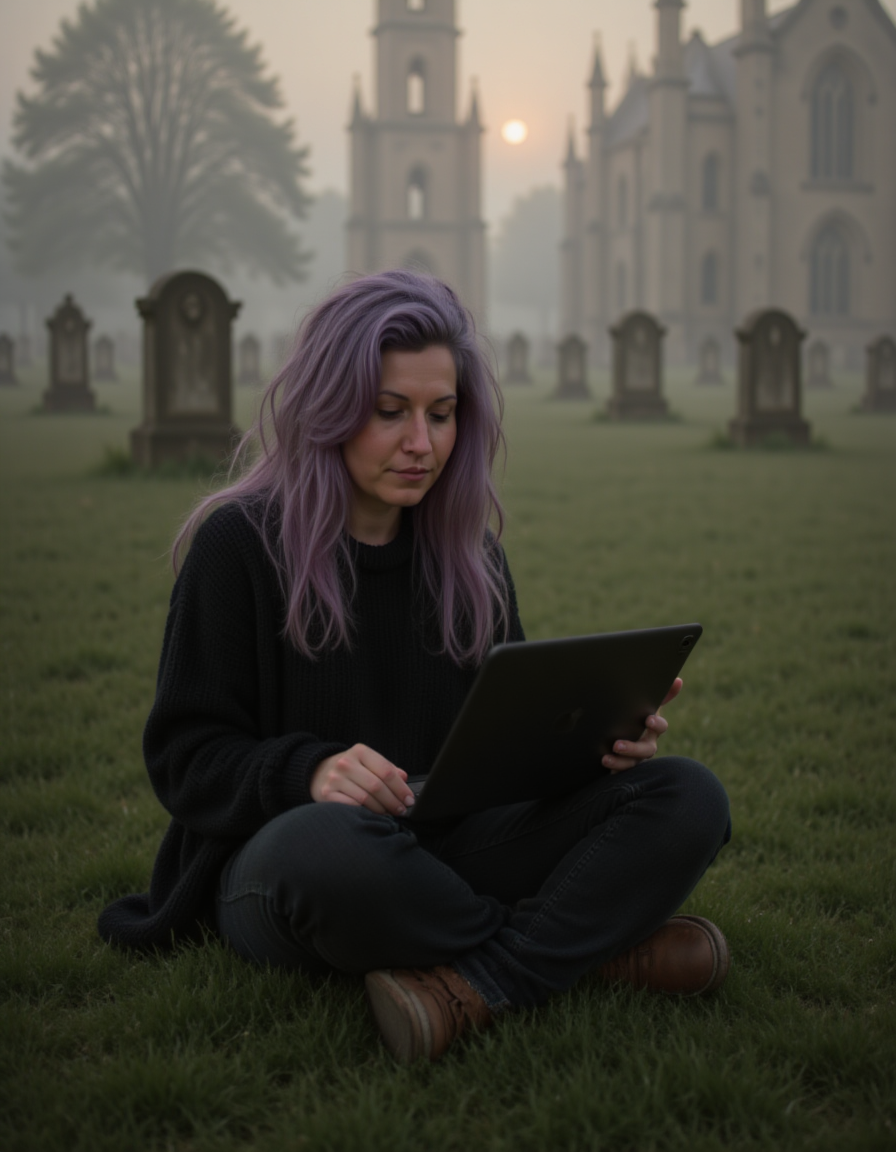
Cemeteries and the Modern Gothic Mood
In our time, cemeteries continue to inspire without needing to terrify. They are photographed for their beauty, visited for their quiet, and incorporated into art and fashion as symbols of reflection. Online, they appear in mood boards and feeds, not as places of fear but as places of poetry.
This echoes the Victorian spirit, which viewed cemeteries as integral to cultural life. Just as the Victorians walked among monuments on Sunday afternoons, we scroll through cemetery imagery in search of mood. Both are acts of reflection, both are aesthetic encounters with memory and aesthetics.

A Respectful Haunting
What cemeteries give to the gothic imagination is not fright, but depth. They remind us that beauty can be solemn, that aesthetics can be quiet, and that shadows need not be frightening. They are resting places, but also spaces where art, architecture, and nature come together to speak softly of time.
When we light candles in October, when we photograph ivy on stone, when we decorate with symbols of memory, we are continuing this tradition. Cemeteries taught us that remembrance can be beautiful. They remain, even today, among the most eloquent teachers of gothic coziness: places where stone and silence speak.